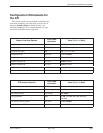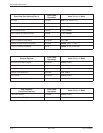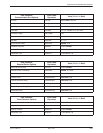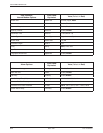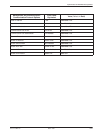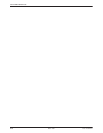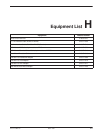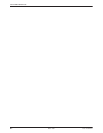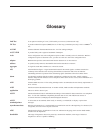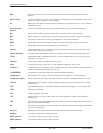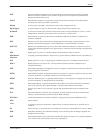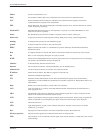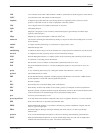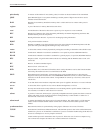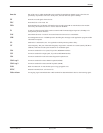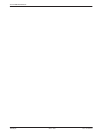
Glossary-13163-A2-GB20-10 March 1999
Glossary
A test pattern consisting of a one (1) followed by seven zeros (on the network only).
A pseudo-random bit sequence (PRBS) that is 511 bits long (on the data ports only). This is a PRBS 2
9
–1
test.
Alternate Channel Alternate Mark Inversion. A T1 line coding technique.
A product family and a registered trademark of Paradyne.
Active configuration area. The configuration option set that is currently active for the device. Before a
configuration option set becomes active, you must save the set to the Active configuration area.
Hardware that provides some transitional function between two or more devices.
A symbol (usually numeric) that identifies the interface attached to a network.
A single bit stream that combines two or more bit streams.
Alarm Indication Signal. A signal transmitted instead of the normal signal to continue transmission
continuity and to indicate to the receiving terminal that a transmission fault exists at either the
transmitting terminal or upstream of the transmitting signal. Sometimes referred to as Blue Alarm.
An abnormal condition affecting modems, multiplexers, and data services units, usually requiring
attention. Major alarms indicate a service disruption; minor alarms are less severe, but are indications of a
developing problem.
Alternate Mark Inversion. A line coding technique used to accommodate the ones density requirements of
E1 or T1 lines.
American National Standards Institute. A member of ISO, ANSI accredits and implements standards.
The use to which a device is put.
American Standard Code for Information Interchange. The standard for data transmission over telephone
lines. A 7-bit code establishes compatibility between data services. The ASCII code consists of
32 control characters (nondisplayed) and 96 displayed characters.
A device that can be attached, either locally or remotely, to a DSU/CSU to display or print alarm
messages.
Data that is formatted so it is synchronized by a transmission start bit at the beginning of a character (five
to eight bits) and one or more stop bits at the end.
American Wire Gauge. An indication of wire size. The heavier the gauge, the lower the AWG number,
and the lower the impedance.
The range of frequencies that can be passed by a transmission medium, or the range of electrical
frequencies a device is capable of handling.
1in8 Test
511 Test
ACAMI
ACCULINK
Activ
adapter
address
aggregate
AIS
alarm
AMI
ANSI
application
ASCII
ASCII
terminal/printer
asynchronous data
AW G
bandwidth



